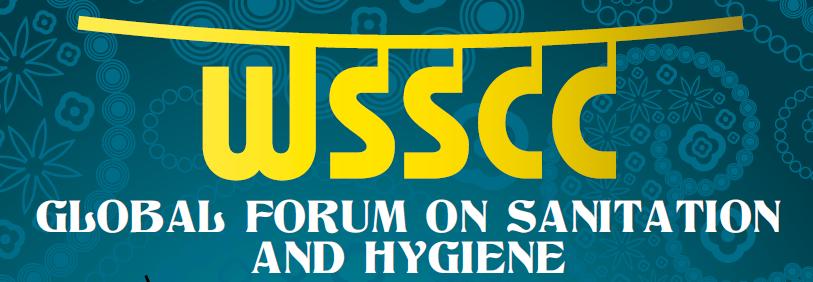/topics/rural-water
Rural Water
Live feed: WSSCC Global Forum on Sanitation & Hygiene - 9-14 October 2011, Mumbai
Posted on 13 Oct, 2011 10:22 AM
We all know the statistics: 2.6 billion people around the world are without access to a basic toilet. Diarrhoea – the vast majority of it due to poor sanitation and hygiene – is the second biggest killer of children worldwide.
Between us, we also have many of the answers. We have experiences of low-cost technologies that are acceptable and affordable for poor communities in rural areas. We have been involved in designing communications programmes that have contributed to sustained behaviour change.
We have seen governments and civil society working together to set up policies and programmes that ensure access to better sanitation in challenging settings, such as crowded informal settlements in fast-growing megacities. We have also seen businesses grow up around sanitation and hygiene, allowing individuals to make a dignified living and clients to buy the sorts of products and services they want and need.
Social exclusion and policy recommendations for the 12th Plan - WASH News and policy update
Posted on 11 Oct, 2011 09:52 PMContent courtesy: India WASH Forum
Thirupporur and Vadakkuppattu: Eighteenth century locality accounts – A report by Centre for Policy Studies
Posted on 10 Oct, 2011 08:26 PMThis research monograph on Thirupporur and Vadakkuppatu: Eighteenth Century Locality Accounts, prepared jointly by the Centre for Policy Studies, Chennai and Tamil University, Thanjavur, presents a graphic picture of the society and polity of eighteenth century Tamil Nadu.
Women and water - A collection of papers - Economic and Political Weekly - Volume XLVI - Number 18 - April 30 (2011)
Posted on 07 Oct, 2011 07:31 PMIt does this in the context of the new decentralised governance structures that are based on the assumption that domestic water supply is the legitimate domain of women and thus power and authority needs to be granted to women to manage water resources.
However, there is a very little understanding of how this has benefited women and what are the challenges experienced during the process of implementation or the outcomes gained from these processes, in the context of the Indian society that continues to propogate patriarchal values and is based on structures that are inherently hierarchical and inequitable.
Some of the papers dwell on and explore the inherent biases in the literature and make an attempt to understand their implications for women in managing water resources, while some of the papers share case studies on the outcomes of the implementation of the decentralised water management policies at the village level.
Jalanidhi-2 programme of the Kerala Rural Water Supply and Sanitation Agency
Posted on 06 Oct, 2011 03:20 PMThis report deals with environmental assessment and environmental management framework for the World Bank supported Jalanidhi-2 programme of the Kerala Rural Water Supply and Sanitation Agency (KRWSA), an important player in rural water supply and sanitation sector of the state.
Polluted river stretches in India: Criteria and status - A report by Central Pollution Control Board
Posted on 04 Oct, 2011 10:53 PMThis brief report by the Central Pollution Control Board (CPCB) presents an analysis of the monitoring of the water quality in India under the National Water Quality Monitoring Programme. The water quality data for the years 2002-2008 has been analysed and monitoring locations exceeding the water quality criteria have been identified as polluted locations with respect to risk.
Institutionalization of users' level - Water quality monitoring and surveillance in Gujarat - A report by WASMO
Posted on 26 Sep, 2011 11:39 AMThe programme focused on community involvement in assessing and evaluating water quality.
Ministry of Drinking Water & Sanitation invites for one-day workshop on rural water supply & sanitation, New Delhi, September 26, 2011
Posted on 25 Sep, 2011 07:32 PMOrganization: Ministry of Drinking Water & Sanitation, Government of India
Venue: Tagore Hall, New Delhi

A one day conference of the State Secretaries in charge of rural development, rural water supply and rural sanitation is to be held under the Chairmanship of Shri Jairam Ramesh, Minister of Rural Development and Drinking Water and Sanitation, on Monday, September 26, 2011.
In the conference, new policy interventions for accelerating the Total Sanitation Campaign (TSC), National Rural Drinking Water Programme (NRDWP) and Indira Awas Yojna (IAY) and convergence between these schemes, MNREGS , and National Rural Livelihood Mission (Ajivika) will be discussed.
"The water in springs of my hills is cool, do not migrate from this land, o my beloved" - Solving water shortages through ancient knowledge
Posted on 24 Sep, 2011 12:33 AMAuthor: Anupam Mishra
"The water in springs of my hills is cool, Do not migrate from this land o my beloved.”
Water and food: Agricultural flows and water markets , The Water Channel, Webinar, September 28, 2011
Posted on 13 Sep, 2011 11:33 PMOrganizer: The Water Channel
Date: September 28, 2011 (Click here to check what time that would be in your time zone.)

The Water Channel was launched at the World Water Forum in 2009 in Istanbul as a partnership of MetaMeta Communications, Nymphaea, UNESCO-IHE, and Cap-Net. The idea was to support education and awareness in water by making video material available that is often scattered and easily lost. It wanted to 'touch' its visitors and to help inspire them to work towards a world of better water management. The first year exceeded the expectations in terms of uptake and content! Joint projects were carried out with a wide variety of organizations and new partners joined in.





